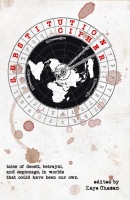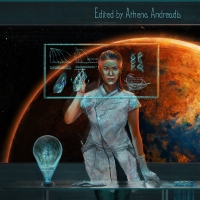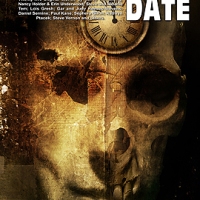It was a long journey overland from Lisboa to Palos de la Frontera on the southern coast of Spain. I was exhausted when I arrived, as was my horse. She got to rest, but I immediately set out to find Captain Colón.
I visited the inn where my sources informed me he was staying, but he was out. The innkeeper thought he might have had a meeting with his investors at their quarters near the Rábida Monastery, so I headed there next.
In last week’s post about some of the real history that lies within my alternate history, “So The Taino Call It,” I mentioned that Columbus had to sell his plan to reach Asia by crossing the Ocean Sea (aka the Atlantic Ocean) to royalty and investors willing to finance his voyage. He also had to “sell” it to any sailors willing to travel with him.
Yes, the money had to come from somewhere, and Columbus didn’t have much. King Ferdinand and Queen Isabella didn’t either, having just completed a little crusade to “rescue” the Iberian peninsula from Muslim control. That story about Isabella selling her jewelry to fund Columbus’s voyage? Didn’t happen.
So, where did the money and men come from?
Well, one of the things I learned in my research is that Christopher Columbus was nothing if not an entrepreneur (I’ve taken to calling him a con artist, but that could just be me). In the two years it took him to convince Ferdinand and Isabella to support his voyage, he had already lined up half the funds he would need from Italian investors. More money and gifts-in-kind did come from the Castilian court, sort of. The royals ordered their treasurer to find money somewhere (ain’t it always the way?), but they also called upon the people under their rule to pony up. Even before sanctioning Columbus’s project, Ferdinand and Isabella ordered all their cities and towns to provide food and lodging to him at no cost, just in case they decided to go for his scheme. When time came to prepare for the trip, they ordered the town of Palos de la Frontera to contribute two ships in payment for a debt they claimed the town owed them.
Those two ships? They turned out to be la Pinta (owned by Gomez Rascon and Christoval Quintero) and la Niña (owned by Juan Niño of Moguer). La Santa María, the flagship of the three, was rented from Juan de la Cosa for the voyage, much to his regret. Interesting to me, as well as to my alpha reader, was that the owners of all three ships joined the expedition.
You’d think they didn’t trust Columbus with their boats or something.
At least two of them didn’t, if Columbus’s journal is to be believed. The owners of la Pinta were none too pleased when the royals forced them to provide a ship for Columbus and, apparently, did all they could to keep it from sailing. When the rudder of la Pinta was damaged, disabling the ship three days into the journey, Rascon and Quintero were suspected of one more last-ditch effort of sabotage.
Fortunately for Columbus, the pilot and master of la Pinta had more vested interest in the voyage’s success and did what they could to help the crippled ship limp into the Canary Islands where it was repaired. These men were Martín Alonso and Francisco Martín Pinzón. Along with their younger brother, Vicente Yáñez, they contributed to Columbus’s voyage financially as well as with their prestige as sailors. Their support of Columbus made it possible for him to recruit much of the crew he needed. They were also responsible for quelling mutiny a couple of times during the voyage and suggesting the course changes that allowed the ships to eventually land safely.
The owner of la Niña was part of another group of brothers who made the journey. The Niño brothers were from the Andalusian town of Moguer and their support of Columbus, as well as their friendship with the Pinzóns, was another aid to recruitment. Juan Niño was master of his own ship (nicknamed after him) and his brother Pedro Alonso piloted la Santa Maria. A younger brother, Francisco, may have also been a sailor on the voyage, but the evidence isn’t clear on this.
So, what do we know about that remaining ship owner, Juan de la Cosa? Like the others, he was an experienced sailor in his own right. He was also a cartographer, and his mappa mundi is the only extant map made by a member of Columbus’s first voyage.

This is it. The New World is shown in green on the left and the Old World in the middle and to the right, in white. (Click to embiggen, if you like.)
The more I researched my story, the more I’ve come to believe that any of the ships’ owners (with the possible exception of Rascon and Quintero–they’re only mentioned disparagingly in Columbus’s journal and then never heard from again; I think there’s another story in that) could have sailed across the Atlantic and back successfully. They had the skill and the courage to do so. They were explorers themselves and, in the Pinzóns’ case, better leaders.
Columbus may not have been the ideal captain for such an expedition, but he had the nerve to think big, a large lust for power and money, and the desire to be “Great Admiral of the Ocean Sea.” And he knew how to sell a deal. More often than not, it’s folks like him that tend to be the winners in this world.
But why did Juan de la Cosa regret the renting of his ship for the voyage? Find out by reading “So The Taino Call It” in Substitution Cipher next week. You could look it up on Wikipedia, too, but that wouldn’t be as much fun.














Pingback: There’s a Little Real History in my Alternate History #5 « M. Fenn
Pingback: Pressing Matters: December 14, 2012, Edition | Candlemark & Gleam